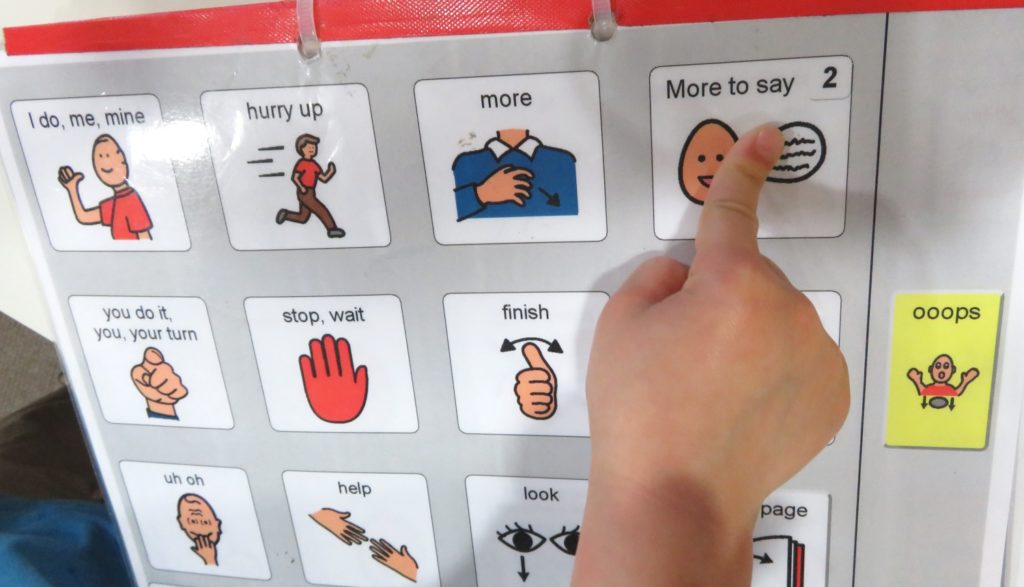
Augmentative and Alternative Communication (AAC)
According to the American Speech-Language-Hearing Association (ASHA) AAC Special Interest Division 12 defined AAC as “AAC refers to an area of research, clinical and education practice. AAC involves attempts to study and when necessary compensate for temporary or permanent impairments, activity limitations and participation restrictions of persons with severe disorders of speech-language productions and/or comprehension, including spoken and written modes of communication.”
Assessment and treatment of individuals who can benefit for AAC technology is extremely technical requiring an experienced SLP who specializes. There are two types of AAC: aided and unaided. Aided employs external equipment ranging from low tech to high tech. Unaided involves using the person’s body. Total communication approach uses both types.
There are various stages an AAC communicator experiences from beginner to expert. Treatment using both types of AAC is different for children and adults. Technology has advanced this area of study greatly over the last 30 years. Unfortunately, although it is wonderful prices have decreased in high tech AAC making this technology affordable to many. These devices are not one size fits all thus requiring an SLP who specializes in this area.
